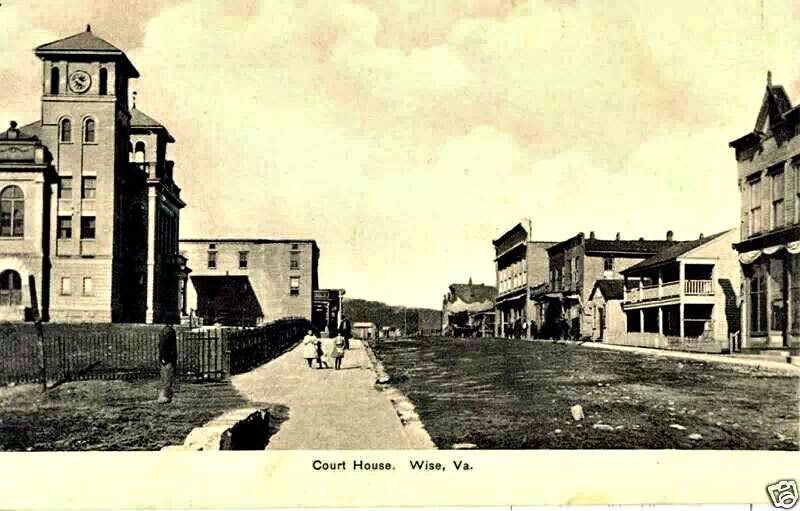The testimony of Jane Mullins is rarely discussed fully. While we have a huge glimpse as to what was actually said at the trial, it is still confusing without the actual questions that she is being asked. We hope that we have helped in trying to quell some of the confusion by adding in several of the possible questions. Again, these are only possibilities, but her answers have not been changed.
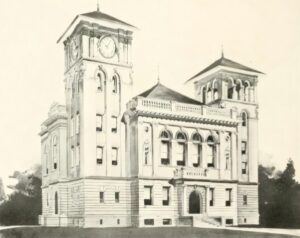
In the trial of Dr. Marshall Benton Taylor, there were 23 Witnesses called by the commonwealth and only 5 of them were cross-examined by the defense. Of these witnesses, only 1 had to be redirected by the prosecution. By comparison, there were also 15 Witnesses called by the defense, and only 2 of them were cross-examined by the prosecution with no redirection.
In addition, the prosecution called 8 witnesses in rebuttal of the defense, and two of them were cross-examined by the defense with no redirection made by the prosecution. Of these 46 witnesses, most gave testimony that seemed to factually help the defense or had no real bearing on the trial. After studying the transcript, reading and re-reading it over and over it is no wonder that the often-told story states that Dr. Taylor was found guilty on circumstantial evidence and the actions involving his rifle taken by 3 jurors.
Johnson Gives Clues
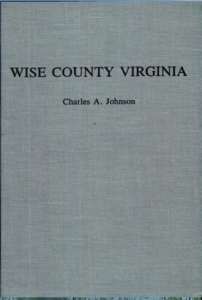
Charles Johnson tells us in his book, A Narrative History of Wise County Virginia, that
“At the time of the Taylor trial, shorthand reporting had not come into popularity and efficiency. So, in making a transcript of evidence, to be used in an appeal to the State Supreme Court of Appeals, the lawyers would write out the evidence of each witness, in narrative style, rather than in the present-day question and answer style. If the lawyers could not agree on the testimony, the judge would write the transcript of the disputed evidence.”
What this means is that no questions were recorded in the transcript except with disputed testimony and in that case, the judge would record the question and answer. This only happened twice in the Taylor trial as there are only two questions recorded in the transcript. One of these occurs in the testimony of Jane Mullins, the question was about how she was able to identify Dr. Taylor during the massacre.
Likewise, it was only the testimony of Jane that had to be redirected by the prosecution. This was because Jane Mullins, star witness for the prosecution, was hammered over and over by the defense over statements that she had made shortly after the massacre. In a modern court case, it is the defense attorneys who prepare the brief on which an appeal is made. However, Mr. Johnson’s further explanation of the transcript informs us that at the time of the Taylor trial, it was the job of the judge and the county clerk to prepare appeals.
Jane Mullins Disappears
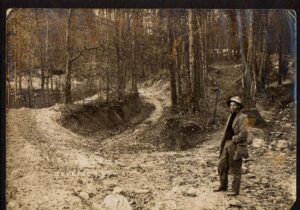
Jane Mullins had disappeared for nearly 4 hours after the massacre and had given contradictory statements about where she was and what she had done during that time… The testimony about this disappearance is just one of the oddities in the transcript that makes us believe that the transcript as presented to the court of appeals was in fact edited.
The record shows that Jane had answered a question about when she had arrived back in the Camden section of present-day Jenkins. But it appears that there were no follow-up questions to ascertain why it took her over 3 hours to travel 6 miles on horseback.
Nor is there any indication that shortly after the massacre there was a search instigated for Jane and her horse. The search for Jane and her horse officially ended at around 6 pm when Jane, her horse, and family members arrived on the mountain to retrieve the bodies of the slain. And the questioning of Jane Mullins and Her story began. But this is not the only odd occurrence in the testimony of Jane Mullin which will be further discussed as they occur in the transcript.
Format Reminder
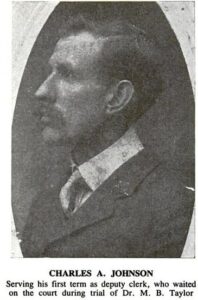
Again, we want to remind our readers and listeners that at the time of the trial no questions were recorded in the transcript unless the testimony of the witness was in dispute. This happens once in the testimony of Jane Mullins.
This means that for all the testimony, we and the court of appeals, are left to our own devices to figure out what the witness was asked that elicited the testimony. A semicolon between the answers is the only clue we are given that the answer to a question had ended, and a new question had been asked.
However, as we will see this process was not always followed. Some of the answers appear to be in response to a multifaceted question or a condensation of the answers to multiple questions. In either case, the transcript is easier to follow the more you are aware of the events leading up to the trial… A luxury that you and we have looked back on the event through hindsight. But one that the court of appeals could not and did not have.
For ease of understanding, some words were added by us to the transcript, these words appear in italic. We have also separated and marked the sections that appear to be answers to multifaceted questions or condensation of multiple questions and answers with a notation of (Next question) and (End of Question) in parenthesis. Other than that, this testimony and transcript are presented Word for Word as they appear in A Narrative History of Wise County Virginia By Charles A Johnson.
The TESTIMONY OF MRS. JANE MULLINS, witness for the Commonwealth.
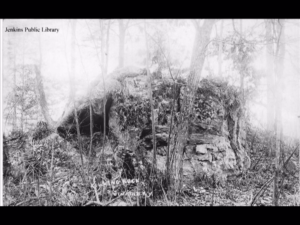
The witness testified that she lived in Kentucky;
was the widow of Wilson Mullins;
that she was along when Ira Mullins and the other persons were killed;
(Next question)
They had got about half a mile from Pound Gap when the shooting commenced, from the right side of the road, and above the road. Her husband started to run;
(End of Question)
(Next question)
he got about ten or fifteen steps when she saw him fall, and she saw one of the horses fall and went around to it and saw it was shot. She ran to her husband and found he was shot;
(End of Question)
(Next question)
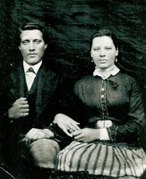
she turned him on his side and looked towards where the shooting came from, and then started back to the wagon to see if the others were killed. She saw three men standing some twenty or twenty-five steps from the wagon. Mrs. Ira Mullins had got out of the wagon and was under it and hollowed to her to come to her. Witness hollowed: “Boys, for the Lord’s sake, don’t shoot anymore, you have killed them all now.”
They replied:
“G– d— you, take to the road and leave, or we will kill you.” She took it to be Dr. Taylor, Henan, and Calvin Fleming;
(End of Question)
she recognized them by seeing them;
(Next Question)
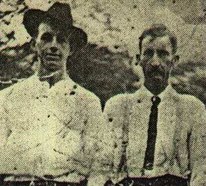
they had green veils over their faces. She recognized Cal. Fleming’s voice, and also thought that she recognized Dr. Taylor’s voice. The veils were over their heads and faces. She could see the lower part of their faces. She thought she recognized M. B. Taylor.
(End of Question)
This is the end of the first round of the questioning of Jane Mullins by the young Commonwealth Attorney Robert Bruce. As you can see, this transcript which was on file at the appellate court would be more informative to us and the appellate judges IF some of the questions had been recorded. Especially in the questioning of the commonwealth’s “star witness” Jane Mullins.
CROSS-EXAMINATION— By Doctor Taylor’s Defense Team.
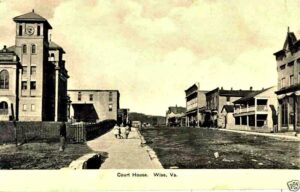
(Next question)
On cross-examination, the witness testified that she was riding behind the wagon and that the Mullins and Harris boy was by her side. Wilson Mullins was by the side of the wagon when the shooting commenced. The shooting came from the righthand side of the road. The parties who did the shooting were behind the rocks or cliffs;
(End of Question)
She could see them from the breast up;
(Next question)
they spoke three or four times. She took it to be Cal Fleming, who spoke first;
(End of Question)
she thought two voices spoke to her;
she got back to Elkhorn about 4 p.m. ;
The First Oddity
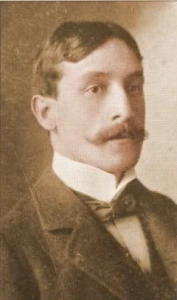
Here is the first oddity in the questioning of Jane Mullins. She is clearly asked about her late arrival to the Camden section of present-day Jenkins Kentucky. However, there are no follow-up questions to ascertain why it took her over 3 hours to ride 6 miles on her return home. A trip that should have taken 15 minutes on a galloping horse.
Yet she had not been seen by anyone traveling that day on either side of Pine Mountain. She had not been seen by anyone until she arrived in Camden, in addition, this means that she passed John Bentley’s store, Richard Broas’s survey camp at Sweet Water, John Wright’s home, and others without stopping to seek help. This is an important bit of information as we shall see.
The importance lies in the fact that no other questions by the defense are recorded in the transcript about her late arrival. Still, in the “reexamination” or redirects by the prosecution, a question is asked about her horse. However, no question about the horse appears in the transcript of the questioning by the defense.
Returning to the Trial
(Next question)
she was excited while the shooting was going on. She had known Dr. Taylor for fifteen years. She had heard him talk, and had stayed overnight with him about seven or eight years before;
(End of Question)
A Possible Reason for Jane Staying with Dr. Taylor
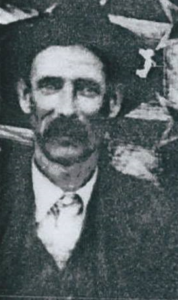
It is at this point that the defense starts pounding Jane about the contradictory statements, she had made prior to being taken into state custody as a star witness… Of note here, Jane states that she had stayed overnight with Dr. Taylor.
This, more than likely, had to do with the birth of Jane and Wilson’s daughter. However, this testimony may have been one of the instances that caused her Identity of Jane to become mixed with two other women. Jane Mullins who Dr. Taylor had an affair and a child with. Her sister Amanda Mullins. And Amoda Jane Mullins, the Wife of Wilson, sister of Ira, and the surviving witness of the Killing Rock. For more information on this see our video titled Who is Jane Mullins? Back to the testimony of Jane Mullins.
Return to the Testimony
she did not state at the inquest that she did not know who it was;
(Next question)
she did not tell Mrs. Blevins, on the day after the killing, that she did not know who it was. She did not tell Mr. Bentley that she did not know who it was;
(End of Question)
Note here, Mr. Bentley was John Vint Bentley the magistrate who conducted the inquest.
(Next question)
she did not tell Mat Blevins that she did not know who it was. She did not tell the grand jury that they had veils all over their faces. She said that she saw part of their faces. Witness said she had heard Dr. Taylor talk last fall. If she told Mrs. Blevins that she did not know them, she was talking and not swearing. She said that she told several people that she did not know who it was;
(End of Question)
A Note About the Veils
Of note here are the veils in question, Jane had told several witnesses that she was only able to see the attackers from the waist to the mouth. From the mouth up they were wearing dark veils held in place by a green band of some sort at their foreheads, but she had told the prosecutor that the veils were green. It is by the end of this question or questions that Jane appears to have become rattled by the defense as we shall soon observe.
Return to the Testimony
(Next question)
she said that she did not swear before Bentley J. V., that she did not know who it was, because he told her that she need not answer that question. She said that she was not point-blank certain that it was Dr. Taylor, but she thought it was.
She thought she could swear positively to a person with their face covered down to the mouth. She said that she did not tell Mrs. Blevins last winter that “yonder goes that old devil now, and that I would like to see him in the middle of a kettle of torment.”
(End of Question)
The Second Oddity
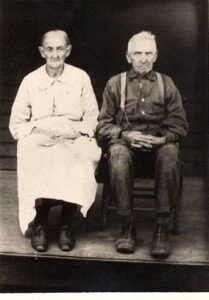
Here is yet another oddity in the transcript. Even though the testimony alludes to the fact that magistrate John Vint Bentley and Robert Mullins conducted the investigation at the crime scene. Neither the transcript nor the story being told by Charles Johnson confirms that fact. It is in the Often-told story that we learn this vital information and the fact that J.V. Bentley conducted the inquest.
Inquests are conducted to gather as much information about a crime as possible. It is often during the inquest that suspects are named. Yet here Jane testifies that J.V Bentley told her not to tell him who she thought had committed the crime… This is a statement that contradicts her earlier testimony and makes no sense. Additionally, we learn from the Often-told story that Henry Adams and James Potter were named as suspects by the inquest due to the circumstantial evidence found at the crime scene.
This is corroborated by the fact that Henry Adams turned himself in and was out on bail by the time of the shootout at the breaks of the Cumberland. The inquest was conducted on or about May 19th and Jane Mullins would be taken into “protective custody” on or about May the 26th. But Dr. Taylor and the Fleming brothers were not named as suspects until Jane testified before the grand jury on June 2nd.
In either case, it was with this answer that “she said she did not swear before Bentley J. V., that she did not know who it was, because he told her that she need not answer that question.” That Jane Mullins, star witness for the prosecution contradicted her earlier testimony and perjured herself.
Therefore, the jury more or less threw out the testimony and it is recorded in the affidavits that the jury only found Dr. Taylor guilty through the evidence found at the crime scene, the bullet shells. And their examination and alteration of Dr. Taylor’s rifle. Back to the transcript and the testimony of Jane Mullins.
Return to the Testimony
She told Calvin and Wesley Swindall that she did not know who it was;
she just told them what she wanted to tell them;
(Next question)
she was afraid to tell who it was, for fear they would kill her. She recognized Dr. Taylor mostly by his looks and saw him from the breast up;
(End of Question)
the recognition of Dr. Taylor was mostly by his looks.
End of the defense questions.
RE-EXAMINATION or redirect by Commonwealth Attorney Robert Bruce.
(Next question)
On re-examination witness said Bentley, Jarvey Candell, and others told her not to tell who it was. Witness heard that Taylor and the Fleming boys were lying around her house trying to kill her;
(End of Question)
that she got this information from James Potter;
when the firing commenced her horse threw her or she got off some way, she didn’t know how.
Save the Witness
Here we see that the prosecution attempts to save Jane Mullins as a witness. We also see that in one of the questions he attempted to recover her testimony about the horse, a line of questioning that makes no sense as the transcript does not record the defense asking a question that would have required this redirect.
But there is an even bigger problem here. Jane Mullins answers an unknown question stating that Taylor and the Flemings were lying in ambush around her home AND that James Potter had told her this.
Although Jane could not know this, the prosecution knew that Sara Blevins would later testify that Jane had told her after the funerals that James Potter, a man whose name repeatedly comes up throughout this story. James Potter had told her, Jane Mullins, that Dr. Taylor and the Fleming’s were the ones who had ambushed her family at the Killing Rock.
It is after this devastating testimony and the equally devastating redirect about the horse that the prosecution knew that Jane was now useless as a witness. This is further reflected when the defense once again questions Jane Mullins.
RE-CROSS-EXAMINATION— By Doctor Taylor’s Defense Team.
(Next question)
On re-cross-examination witness further stated that she told what suited her and when it suited her. Witness further stated that she had been brought over here by the officers of the county, and had been here ever since, in the care of the officers of this county.
(End of Question)
End of Jane Mullins’ Testimony.
Jane Admits to Lying
This concludes the testimony of Jane Mullins. As you can see, not only did Jane perjure herself with the testimony about J. V. Bentley and the inquest. But by this time Jane had become extremely agitated and upset. Telling the defense, the court, and the jury that she was in fact a liar. She did this by contradicting her entire testimony by stating that she “told what suited her and when it suited her.”
The final note in the testimony of Jane Mullins is a disputed part of Jane’s Testimony. We know this because it has a recorded question. This means that question was clarified by the judge with a question of his own. This occurred during the original cross-examination by the defense, the transcript reads.
On cross-examination by the defense
The witness was asked how she could recognize Dr. Taylor.
She answered she could see him from the waist up to the place where the veil came. She also said there was, at the time they were talking to her, a slight cessation of firing when the smoke rose so she could see them.
One last note on this question asked by the Judge. The only questions recorded in the transcripts were those that were asked by the judge. These were supposed to clarify a disputed testimony. But in this case, the question is nearly pointless and clarifies nothing as the answer is almost verbatim to the rest of the testimony about the veils. This is another instance in which someone who is not familiar with the case can garner no information about the importance of this testimony, which includes the appellate court.
However, looking back on the case through history and hindsight we can clarify the testimony.
Hindsight
Jane had been asked a question by the defense about the identity of the attackers and a statement that she had originally made to the May 26th grand jury that had issued the first indictment dated June 3rd, 1892… That indictment had been quashed and thrown out at the deposition on July 26th.
Robert Bruce had then handwritten a new indictment and had Jane Mullins sign it as “Witness.”
The new grand jury, who had just been seated on July 26th had not heard any testimony before signing off on the second indictment. The information about the veils is vital to know in this case, BUT the new grand jury and the appellate court would not have known what we are about to tell you.
Jane Mullins had told several people that the men had worn dark veils that came down to their mouths and were held in place by a green band at the forehead. The prosecution had apparently been aware of this and asked a question about it to which Jane had testified “The veils were over their heads and faces. And that “She could see the lower part of their faces.”
However, the defense had apparently asked Jane about what she had told the grand jury on June 3rd about those veils. To which she testified that “She did not tell the grand jury that they had veils all over their faces” And that she had told the grand jury that “…she saw part of their faces.” This line of questioning and her answer seems to have rattled Jane. It is as if she was not aware that the defense would have access to what she had told the grand jury.
Looking at this, the testimony that she said she had made to the grand jury contradicted the testimony she had just made to the prosecution. This meant that either she had lied to the grand jury or that she had just lied on the stand to the question asked by the prosecutor Robert Bruce.
We know this because the judge asked the clarifying question AND the defense kept coming back to this line of questioning as Jane further testifies that; “She said she was not point-blank certain that it was Dr. Taylor, but she thought it was. She thought she could swear positively to a person with face covered down to the mouth.”
And two other times in the same testimony she states, “She recognized Dr. Taylor mostly by his looks and saw him from the breast up;” AND “the recognition was mostly by his looks.”
Think about this for a moment, how likely are you to identify someone during a shootout who is trying to kill you when you can only see that person from the waist to the chin area? She had already testified that she was “highly excited” or more to the point frightened and fearing for her life, yet Jane had managed to not only identify one shooter dressed in this fashion, which is highly unlikely but three shooters in similar garb in a matter of moments.
In all Jane Mullins had perjured herself at least 3 times, more than any other reason is why her testimony of Jane Mullins is Highly Unreliable.
Thank You
We at Kentucky Tennessee Living want to thank you for watching our series on The Killing Rock. Don’t forget to hit that like button as the more likes we receive the more likely YouTube is to suggest our videos to other viewers. Also, to receive notice when we upload a new video be sure to subscribe and click the bell notification.
We thank you for continuing to support Kentucky Tennessee Living. As we bring to you the history of the Appalachian Mountains. We must remind everyone that the story names Killing Rock: The Oft Told Tale (s) and Killing Rock: The Untold Story and Killing Rock: the Trial are all under Kentucky Tennessee Living copyright.
Source Information
A Narrative History of Wise County, Virginia By Charles A. Johnson Pub. 1938.
Copyright and Other Information
All photos are in the public domain unless otherwise noted. This includes photos dated before 1923. All other photos are used with permission or under the education fair use statute of the US copyright law.
Copyright 2022 Kentucky Tennessee Living
kytnliving.com/copyright-2/
Social Media Pages
For more about us, you can visit our Facebook page:
https://www.facebook.com/kytnliving
Our Twitter page:
https://www.twitter.com/KYTNLiving
Our YouTube Channel:
https://www.youtube.com/kytnliving
When we forget our past and who we are as a people, then we become who “they” say we are. ~~ David Sergent
I have attended the University of Kentucky. I have an Associates Degree from Hazard Community College and Technical School. I have also attended the University of Pikeville. I have taken several classes in Journalism as well as in the Appalachian History, Literature, and Sociology during my time at those schools.
I was born in Florida and grew up in Burdine, Kentucky. I have been married to David W. Sergent since May 4, 2013. I have two children and four grandchildren from a previous marriage. I currently live in Tennessee but my hope is to one day come back home to live in the beautiful mountains once more.


